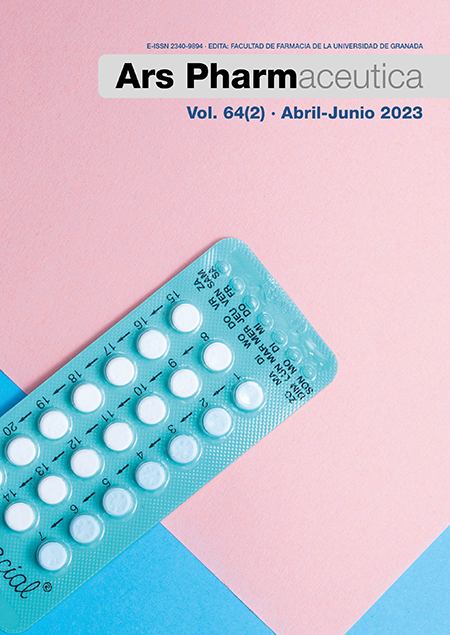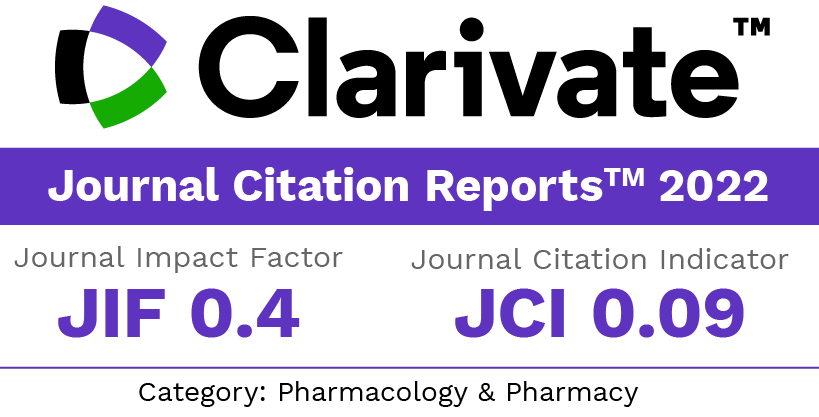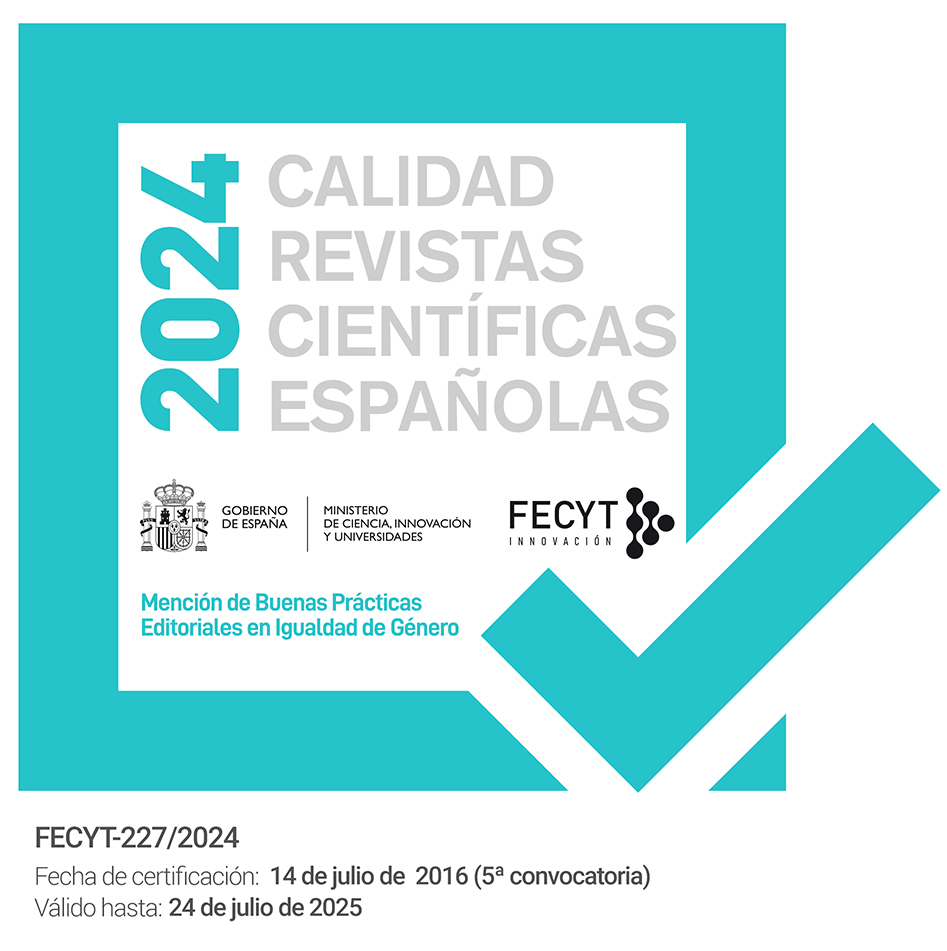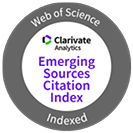Enhancing the dissolution rate of poorly soluble drug Febuxostat using spray dried amorphous solid dispersion technique
Amorphous soli dispersion, febuxostat
DOI:
https://doi.org/10.30827/ars.v64i2.27058Keywords:
Amorphous Solid dispersion, Febuxostat,, Kollidon SR, HPMC K4M, Full factorial designAbstract
Introduction: Febuxostat belongs to Biopharmaceutical classification system (BCS) class II drugs, which have low solubility and high permeability. Amorphous solid dispersion is one of the techniques which can be useful to improve solubility and powder characteristics.
Objective: To optimize the concentration of hydrophilic and hydrophobic polymers to improve the dissolution rate and solubility of febuxostat tablets.
Methods: The amorphous solid dispersion of febuxostat was prepared by spray drying method using Kolliphor P237 (1:2). This amorphous solid dispersion was further used to compress the tablet. To improve solubility and dissolution rate, a full factorial design was applied to optimize the critical concentration of Kollidon SR and hydroxypropyl methyl cellulose (HPMC K4M). The prepared tablets were characterized by pre-compression and post-compression parameters.
Result: The rate of drug release was sustained by formulating an amorphous solid dispersion technique. The optimized batch (FSRT-OB) was found to be fit for release average 93.30 % of the drug in sustain release manner up to 12hrs. The release kinetic data suggests that the drug release was controlled by combination of diffusion and chain relaxation mechanism. The optimized concentration for Kollidon SR and HPMC K4Mwas found to be 38.50 % and 7.72 % respectively.
Conclusion: Amorphous solid dispersion technique is useful to enhance solubility, dissolution rate, and bioavailability of the Febuxostat tablet.
Downloads
References
Bisht M, Bist SS. Febuxostat: a novel agent for management of hyperuricemia in gout. Indian JPharm Sci. 2011;73(6):597-600. doi:10.4103/0250-474X.100231.
Paradkar A, Ambike AA, Jadhav BK, Mahadik KR. Characterization of curcumin-PVP solid dispersion obtained by spray drying. Int J Pharm. 2004;271(1-2):281-6. doi:10.1016/j.ijpharm.2003.11.014.
Chiou WL, Riegelman S. Pharmaceutical applications of solid dispersion systems. J Pharm Sci. 1971;60(9):1281-302. doi:10.1002/jps.2600600902.
Shah JC, Chen JR, Chow D. Preformulation study of etoposide: II. Increased solubility and dissolution rate by solid-solid dispersions. Int J Pharm. 1995;113(1):103-11.
Sastry SV, Nyshadham JR, Fix JA. Recent technological advances in oral drug delivery - a review. Pharm Sci Technol Today. 2000;3(4):138-45. doi:10.1016/s1461-5347(00)00247-9.
Habib W, Khankari R, Hontz J. Fast-dissolve drug delivery systems. Crit Rev Ther Drug Carrier Syst. 2000;17(1):61-72. doi:10.1615/CritRevTherDrugCarrierSyst.v17.i1.20.
Dass R, Jaiswal S, Gupta G. Formulation and evaluation of febuxostat fast disintegrating tablet. Indo american journal of pharmaceutical research. 2014;4:2928-36.
Eriksson L. Design of experiments: principles and applications. MKS Umetrics AB; 2008.
Ahuja BK, Jena SK, Paidi SK, Bagri S, Suresh S. Formulation, optimization and in vitro–in vivo evaluation of febuxostat nanosuspension. Int J Pharm. 2015;478(2):540-52.doi: 10.1016/j.ijpharm.2014.12.003.
Saag KG, Becker MA, Whelton A, Hunt B, Castillo M, Kisfalvi K et al. Efficacy and Safety of Febuxostat Extended and Immediate Release in Patients With Gout and Renal Impairment: A Phase III Placebo‐Controlled Study. Arthritis Rheum. 2018;71(1):143-53. doi:10.1002/art.40685.
Song SH, Chae BR, Sohn SI, Yeom DW, Son HY, Kim JH et al. Formulation of controlled-release pelubiprofen tablet using Kollidon((R)) SR. Int J Pharm. 2016;511(2):864-75. doi:10.1016/j.ijpharm.2016.07.074.
Jung JY, Yoo SD, Lee SH, Kim KH, Yoon DS, Lee KH. Enhanced solubility and dissolution rate of itraconazole by a solid dispersion technique. Int J Pharm. 1999;187(2):209-18. doi:10.1016/s0378-5173(99)00191-x.
Sahoo J, Murthy PN, Biswal S, Manik. Formulation of sustained-release dosage form of verapamil hydrochloride by solid dispersion technique using Eudragit RLPO or Kollidon SR. AAPS PharmSciTech. 2009;10(1):27-33. doi:10.1208/s12249-008-9175-0.
Shamma RN, Basha M. Soluplus®: a novel polymeric solubilizer for optimization of carvedilol solid dispersions: formulation design and effect of method of preparation. Powder Tech. 2013;237:406-14.
Siepmann J, Peppas NA. Modeling of drug release from delivery systems based on hydroxypropyl methylcellulose (HPMC). Adv DrugDeliv Rev. 2001;48(2-3):139-57. doi:10.1016/s0169-409x(01)00112-0.
Sahoo J, Murthy PN, Biswal S, Sahoo SK, Mahapatra AK. Comparative study of propranolol hydrochloride release from matrix tablets with KollidonSR or hydroxy propyl methyl cellulose. AAPS PharmSciTech. 2008;9(2):577-82. doi:10.1208/s12249-008-9092-2.
Shah N, Sandhu H, Phuapradit W, Pinal R, Iyer R, Albano A et al. Development of novel microprecipitated bulk powder (MBP) technology for manufacturing stable amorphous formulations of poorly soluble drugs. Int J Pharm. 2012;438(1-2):53-60. doi:10.1016/j.ijpharm.2012.08.031.
Song Y, Wang L, Yang P, Wenslow RM, Jr., Tan B, Zhang H et al. Physicochemical characterization of felodipine-kollidon VA64 amorphous solid dispersions prepared by hot-melt extrusion. J Pharm Sci. 2013;102(6):1915-23. doi:10.1002/jps.23538.
Six K, Verreck G, Peeters J, Brewster M, Van Den Mooter G. Increased physical stability and improved dissolution properties of itraconazole, a class II drug, by solid dispersions that combine fast- and slow-dissolving polymers. J Pharm Sci. 2004;93(1):124-31. doi:10.1002/jps.10522.
Patel J, Dhingani A, Garala K, Raval M, Sheth N. Design and development of solid nanoparticulate dosage forms of telmisartan for bioavailability enhancement by integration of experimental design and principal component analysis. Powder Technol. 2014;258:331-43. doi:10.1016/j.powtec.2014.03.001.
Published
How to Cite
Issue
Section
License
Copyright (c) 2023 Vaishali Patel, Anita Patel, Ashish Shah

This work is licensed under a Creative Commons Attribution-NonCommercial-ShareAlike 4.0 International License.
The articles, which are published in this journal, are subject to the following terms in relation to the rights of patrimonial or exploitation:
- The authors will keep their copyright and guarantee to the journal the right of first publication of their work, which will be distributed with a Creative Commons BY-NC-SA 4.0 license that allows third parties to reuse the work whenever its author, quote the original source and do not make commercial use of it.
b. The authors may adopt other non-exclusive licensing agreements for the distribution of the published version of the work (e.g., deposit it in an institutional telematic file or publish it in a monographic volume) provided that the original source of its publication is indicated.
c. Authors are allowed and advised to disseminate their work through the Internet (e.g. in institutional repositories or on their website) before and during the submission process, which can produce interesting exchanges and increase citations of the published work. (See The effect of open access).























